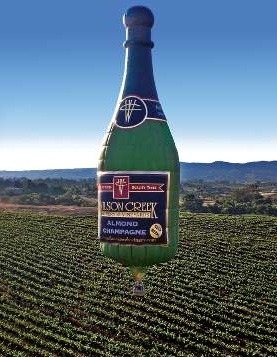6 Up-And-Coming U.S. Wine Regions
In the vast landscape of up-and-coming wine regions, the U.S. actually has quite a lot to brag about.
They're the kinds of places that in-the-know locals have long espoused, and ahead-of-the-curve enthusiasts have guarded and played strategically like a strong poker hand. It's a region like Temecula Valley in southern California, which is creating an identity for itself in a state already brimming with viticultural star power. Or perhaps it's the small wine trails of Old Mission Peninsula in Michigan or Arizona's Verde Valley, which are making big impressions with wines that are a truly unique reflection of place.
Read on for a look at six favorite up-and-comers in the world of wine.
Temecula Valley, Calif.
This southern California region has been gaining attention for its award-winning wines and is steadily stepping out of the shadow of the state's big-name wine regions. Situated about an hour outside San Diego, the area's vineyards benefit from a location that is both elevated (about 1,500) and naturally cooled by the Pacific air. Popular varietals from the region include Cabernet Sauvignon, Zinfandel, and Syrah, but some wineries also grow Chardonnay, Pinot Noir, and Sangiovese, among others. (Photo courtesy Wilson Creek Winery)
Names to know: Wilson Creek Winery, Falkner Winery (praised for its "soft, food-friendly style wines"), Thornton Winery, and South Coast Winery, which, in 2009, was named "Golden State Winery of the Year" for the second consecutive year.
Verde Valley, Ariz.
Given the growing interest in the Verde Valley over the last few years, this "under-discovered" wine region might soon have to lose the prefix. Woven between Sedona and three surrounding areas, the region boasts only a handful of small, family-owned vineyards and tasting rooms — four and five, respectively, to be exact. In terms of character, the wines of this region are heavily influenced by a microclimate that combines arid desert heat in the daytime, cool evenings, and volcanic soil. (Warning: If you're not a local, getting your hands on these bottles might be a bit of a challenge, although some are available online.)
Names to know: Considering that there are only four wineries, it's worth it to get to know all of them: Alcantara Vineyards (the first winery on the Verde River, it produces 12 different varietals), Javelina Leap (try their Zinfandels), Oak Creek Vineyards, and Page Springs Cellars (specializing in European-style wines that highlight the terroir).
Yadkin Valley, N.C.
In a landscape once dominated by tobacco and dairy farms, the Yandkin Valley is giving North Carolina something else besides barbecue to brag about. This rapidly developing wine region, the state's first AVA, grew from four wineries in 2001 to 35 in 2011. Located along the Blue Ridge Mountains, the area's temperate climate and clay soil make it a great venue for growing a number of European varietals (Chardonnay, Viognier, Riesling, Cabernet Sauvignon, Merlot, Syrah, and Cabernet Franc).
Names to know: RagApple Lassie Vineyard, RayLen Vineyards & Winery, Shelton Vineyards
The narrow stretch of land that makes up this relatively young AVA (it was only approved in 1987) is just 19 miles long and three miles wide. Not surprisingly, the seven vineyards that call the region home are deeply influenced by the surrounding Grand Traverse Bay — despite the area's severely cool climate, the "lake effect" actually helps prevent frost during the short growing season. As one might expect, Riesling, Chardonnay, Gewüztraminer, Pinot Gris, and sparkling wines tend to grow best here, as well as red varietals like Pinot Noir and Cabernet Franc. (Photo courtesy Chateau Chantal)
Names to know: Bowers Harbor Vineyards, Chateau Chantal, Chateau Grand Taverse
Finger Lakes, N.Y.
With all the attention this region has been getting over the past few years, it seems about ready to leave the "up-and-coming" category in the dust. Located in upstate New York around the area's four major glacial lakes, it is actually the state's largest wine producing region. Cold climate-friendly varietals thrive — including Riesling, Chardonnay, Pinot Noir, Cabernet Franc, Gewürztraminer — the last of which was recently singled out in the spotlight over the area's more well-known Rieslings.
Names to know: Standing Stone Vineyards, Dr. Konstantin Frank's Vinifera Wine Cellars, Hermann J. Wiemer Vineyards
Although grapes have been growing in Illinois for more than 150 years, this region only officially became an AVA in 2006 — the state's first, in fact. The area's characteristics have been likened to those of the wine producing regions of Missouri, as well as some parts of Spain and Italy — good elevation, limestone and sandstone soil, and cool breeze. Perhaps most interesting, though, are some of the region's French-American hubrid grape varieties, including Chancellor, Chambourcin, Vidal, and Villard Blanc, originally introduced there by renowned winery Alto Vineyards. (Photo courtesy StarView Vineyards)
Names to know: Owl Creek Vineyard, Alto Vineyards, StarView Vineyards

